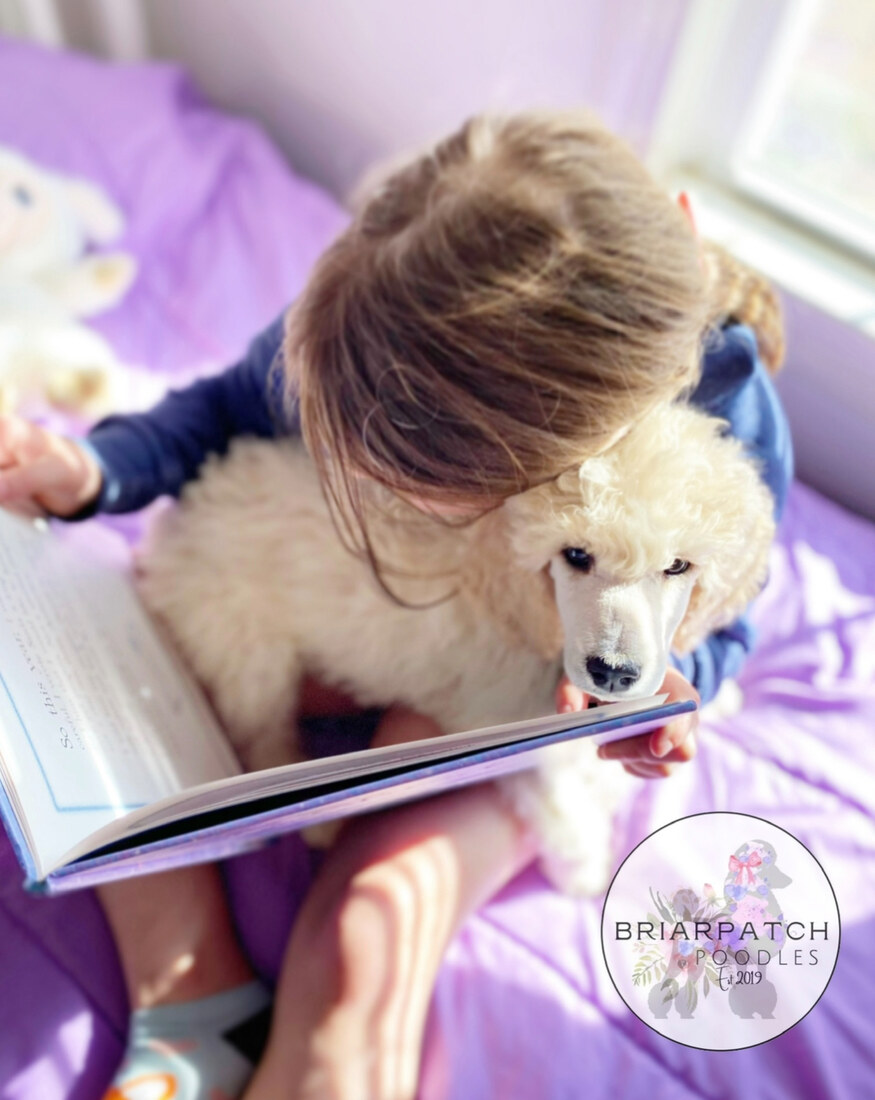Raising A Puppy With Children

Some of my fondest childhood memories include my dog.
He was the epitome of a child’s dog~ always ready to learn a new trick, always ready for a walk, always ready for a snuggle. He was kind, patient, affectionate and utterly wonderful. We’d spend hours reading dog encyclopedias together and he even accompanied me to Show & Tell in Middle School, where I proudly demonstrated how you should groom a Collie. He was perfect for me and truly was the start of my lifelong passion for dogs.
Thankfully, he was so patient and loved everything about being a child’s dog. The Poodles in our home remind me so much of him~ their desire to snuggle the kids, play with them, watch over them, learn a new trick for them… but even wonderfully-patient dogs, who love children, deserve a life of peace and boundaries.
We all understand the concept of helping puppies learn boundaries when they first come home. We teach them how to sit politely, how to not beg for food, how to be quiet in their crate, and so many other essential life skills, catered to our desires.
That same concept of teaching boundaries needs to also be instilled in our children.
It can be tempting for children to view dogs as stuffed animals that can be squeezed, hugged, or toted around at their whim. It’s even more tempting when their dog is a Poodle puppy (which actually looks and feels like a stuffed animal!) Puppies aren’t stuffed animals, though, and it’s important we teach our kids how to be kind to them and interact with them in ways that make them feel loved, so they can love us back. Children have to learn how to be respectful of their new puppy’s boundaries… not a respect based on fear, but a respect based on empathy and a desire to connect in a way that is mutual, safe and trusted.
For my children, I’ve found that a list of do’s and dont’s has been helpful when teaching them responsibility and empathy for dogs.
DO:
Let the dog come to you
Let the dog walk away if they decide to (We don’t chase or follow a dog who has decided they’ve had enough snuggles/attention/playtime in the moment)
Pet the dog calmly and gently
Speak kindly without screaming
Teach the dog new tricks
Take the dog for walks (with the help of your parents)
Watch for dog body language to figure out how your dog is feeling
DON’T:
Force affection
Hug, squeeze or kiss the dog
Lay or jump on the dog
Pull the dog’s ears, tail, paws, lips, etc
Put your face in the dog’s face
Touch the dog when it’s sleeping, in its crate, eating or has a treat
When we as parents, ensure a safe and loving environment for our puppy to grow up in, we ensure that their bond with our children is the kind of bond that will be remembered for decades to come.

